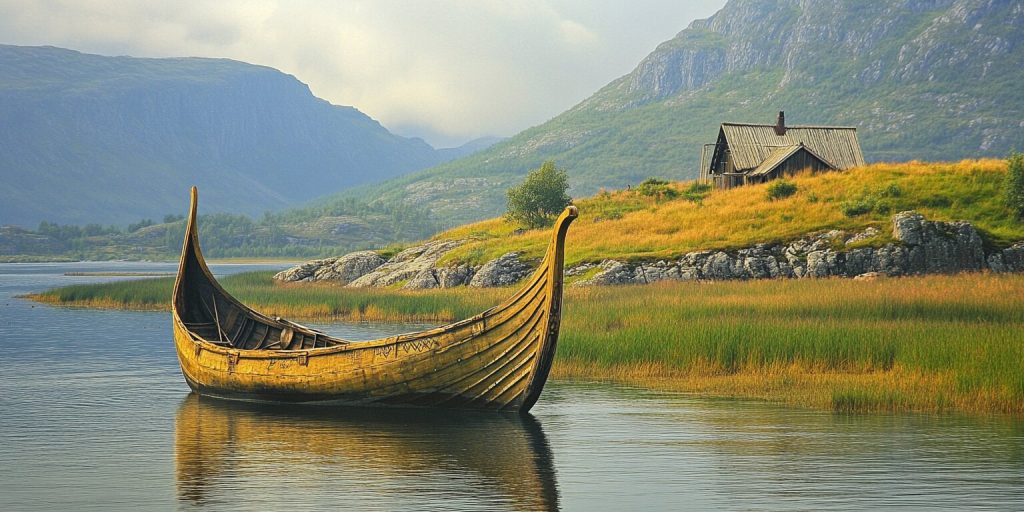Viking Sites, Vikings
Viking Sites in Canada
Viking history is not just in Scandinavia; it extends to places like Iceland and Newfoundland. Canada has some key Viking sites showing a deep exploration and settlement history. L’Anse aux Meadows is the only confirmed Norse site in North America. It gives us a peek into the lives of brave sailors.
Canadian Viking history, particularly in Labrador, can teach us about the Viking heritage. We see how Norse explorers made their mark in the New World almost a thousand years ago. Archaeological finds at these sites attract historians and travelers interested in the Viking settlement in the New World and the known sites established by Vikings.
Introduction
The Viking Age was from the late 8th to the early 11th centuries. It was a time of great voyages by the Norse explorers, including Leif Erikson, who contributed to the European settlement in the New World. They sailed across Europe and the North Atlantic.
They found new lands like Greenland and Canada, contributing to the saga of exploration and the voyages of the Vikings in North America. One important place they found was the L’Anse aux Meadows National Historic Site in Newfoundland.
L’Anse aux Meadows shows us the Vikings’ presence in North America. It’s a UNESCO World Heritage Site. This site helps us understand the Vikings’ link to Vinland, a known site established by the Vikings.
Visiting these places lets us see the Vikings’ big impact on Newfoundland. It shows their adventurous spirit and how they shaped the area’s identity.
Featured Viking Sites
Canada has many important Viking sites, including the first and only known site established by Vikings in North America. Each shows us how the Vikings lived in North America and gives clues about their bravery and skills.
L’Anse aux Meadows
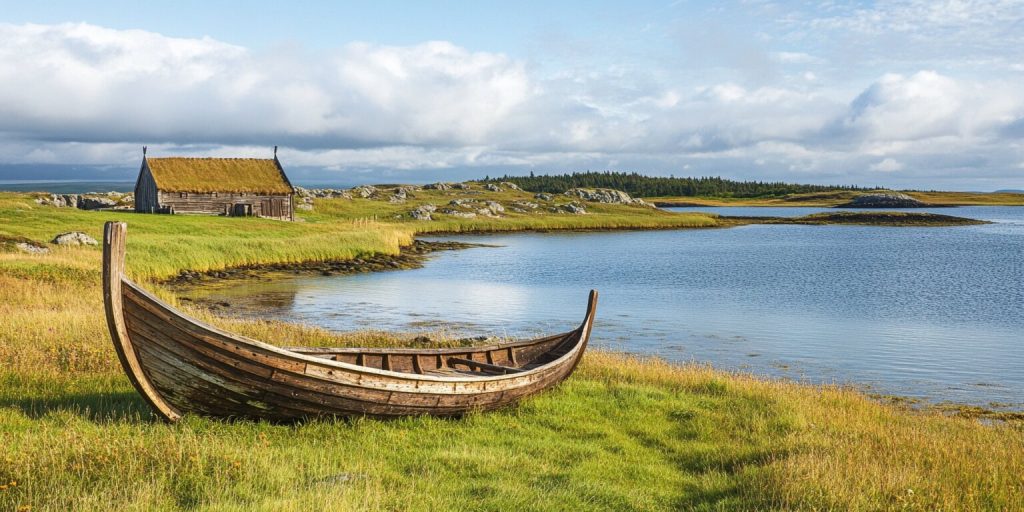
L’Anse aux Meadows is the first Viking site found in North America and the only confirmed Norse settlement in North America.
There are eight structures left from the Vikings at this archaeological site. They found iron tools that proved Vikings were there. These tools match what’s in old Viking stories.
Point Rosee
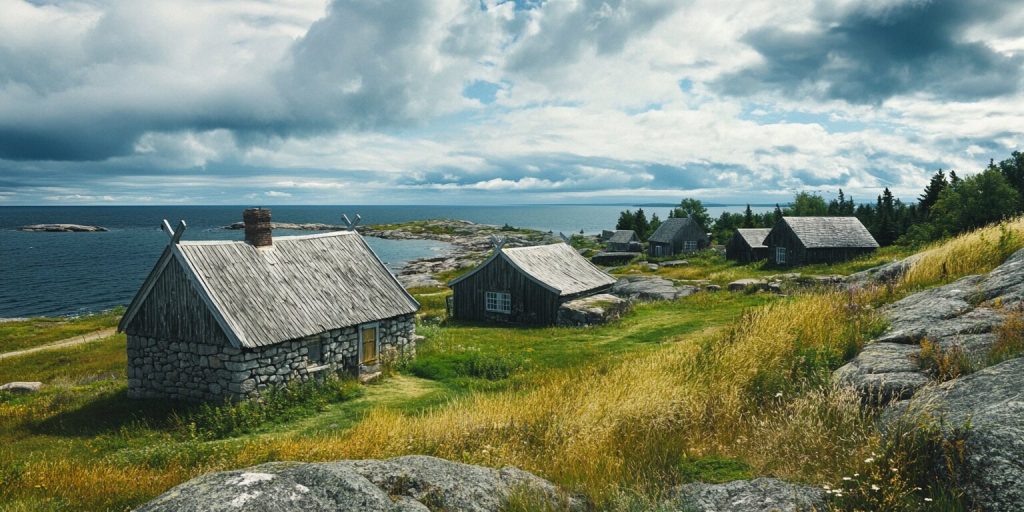
Point Rosee is on the edge of Newfoundland. It shows signs of Viking activity. Excavations found artifacts from a possible Viking settlement over a thousand years old.
This site helps us learn more about Viking explorations and their impact on European settlement in the New World. It shows they went further than we thought.
Baffin Island
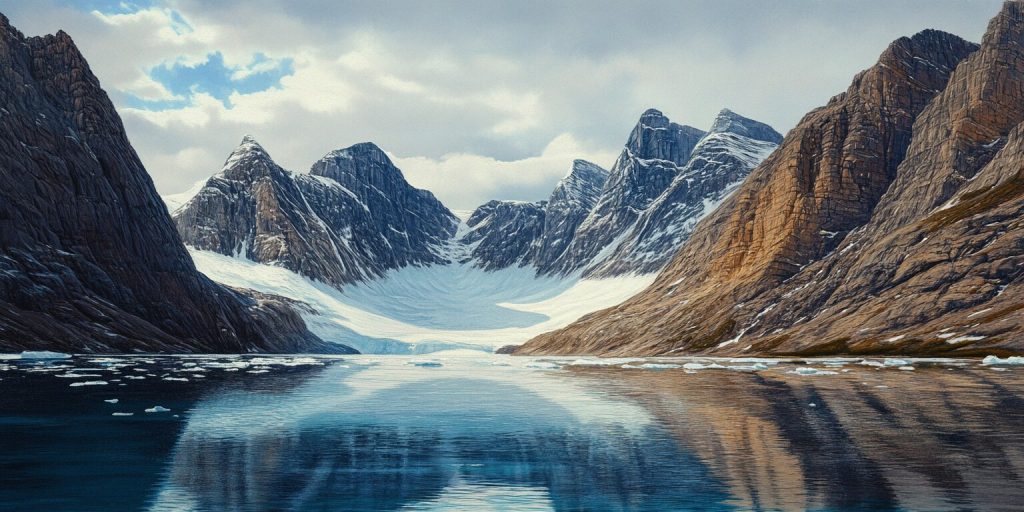
Archaeological evidence suggests that Vikings visited Baffin Island. There is not much proof yet, but research is ongoing. If true, it would show that Vikings went to very remote places.
This could mean Vikings had a big area they explored in North America, including parts of Newfoundland and Labrador.
Groswater Bay
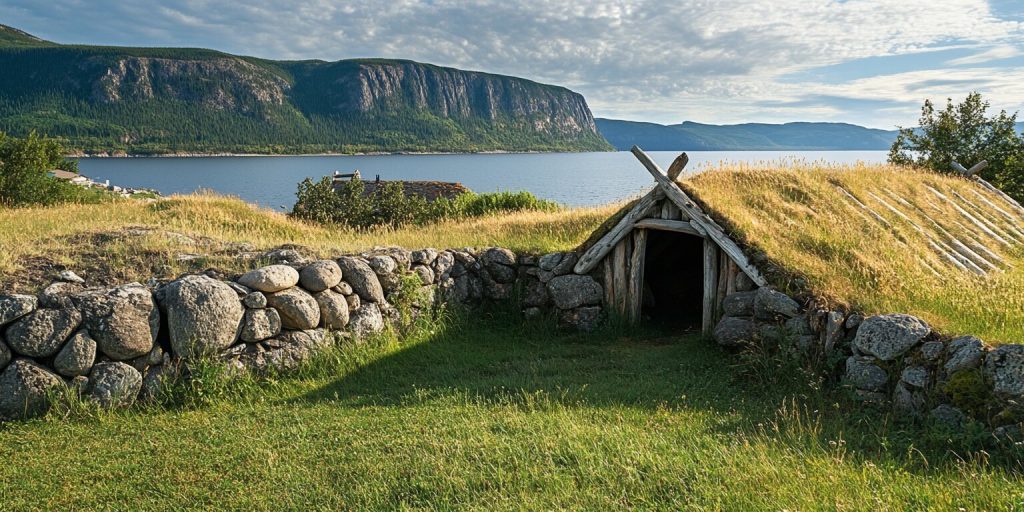
Groswater Bay is known for its Viking finds. Archaeologists have found Viking artifacts and buildings at this archaeological site, adding to our knowledge of Viking explorations in Canada.
It helps us understand more about Viking settlements in Canada. Vikings were all over the country, particularly in the provinces of Newfoundland and Labrador.
Tanfield Valley
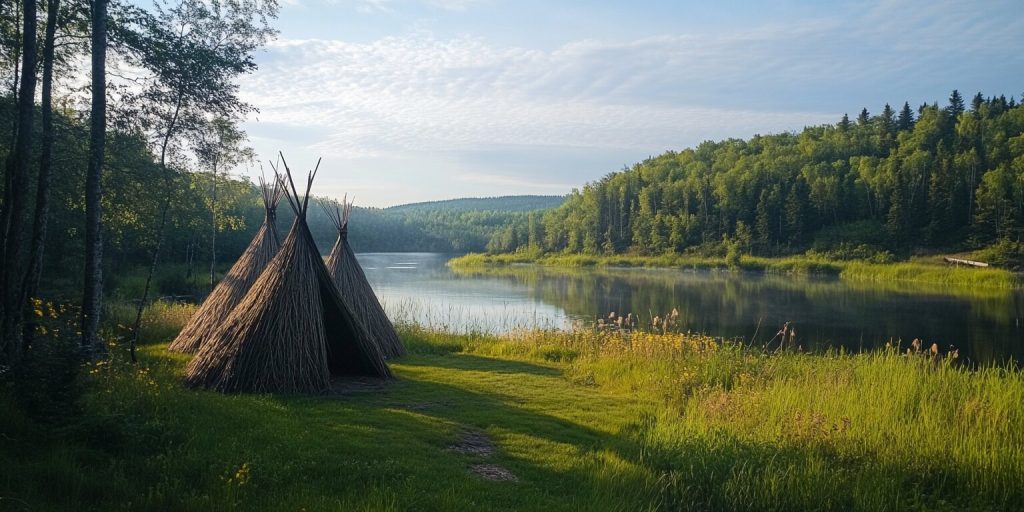
Tanfield Valley might be another Viking site, adding to Newfoundland and Labrador’s rich tapestry of Viking history. Early looks have found things that could be from the Vikings. It could tell us more about Viking technology and life.
This site could be very important for learning about Vikings.
Travel Tips
Planning to visit Viking sites in Canada? Make sure you’re well-prepared. Summer is the best time to go because the weather is nicer for outdoor fun. You’ll get to see beautiful landscapes and learn about the Viking history.
- Consider joining a guided tour. These tours provide cool facts about the sites and Viking culture, which will enhance your visit.
- Book your stay early, especially in places like St. Anthony. This helps make your trip smoother, especially when visiting Parks Canada sites.
- Remember to bring the right outdoor gear. You’ll need strong shoes and clothes at Viking sites for the weather.
Getting ready for your trip to Viking sites in Canada will make it more fun and interesting. You’ll also learn a lot about Viking history.
Cultural Insights & Viking History
Viking sites in Canada mean more than just old artifacts. They show how Viking history and Indigenous stories came together in the Grassy area. These sites tell of a time when Vikings and Indigenous peoples shared ideas and traditions.
This sharing of stories helps us understand the Vikings’ mark on North America. It shows how their stories and the stories of Indigenous peoples are connected. This mix of tales tells us about the Vikings’ spirit of adventure and their meetings with Native peoples.
- The Vikings contributed to a narrative of exploration and trade.
- Indigenous peoples adapted and responded to Norse settlements.
- Shared practices and technologies emerged from these interactions.
Looking at these sites helps us value Canada’s rich history. Each Viking site has its own story, which mixes Viking exploration with Indigenous heritage. This mix creates a deep conversation about our shared history.
Final Thoughts
The possible Viking sites Canada, particularly in Newfoundland and Labrador, let us see the impact of Vikings on our history. They show a key part of how North America was discovered. Places like L’Anse aux Meadows are not just old ruins. They connect us to the stories of Inuit and Norse people and their meetings.
These sites tell tales of bravery, settling new lands, and the strength of people, reminiscent of the earliest evidence of Viking presence. The Norse explorers in Canada were a big step in world history. They showed they could explore new places like Greenland and Labrador before Columbus even thought about it. Their saga still sparks our interest and helps us learn about our past.
Going to these places teaches us a lot about our heritage and helps keep our culture alive, especially regarding the national historic site of Canada. The Vikings in Canada remind us of how our world’s history is linked to their voyages and discoveries. They show us the stories that make us who we are today.

